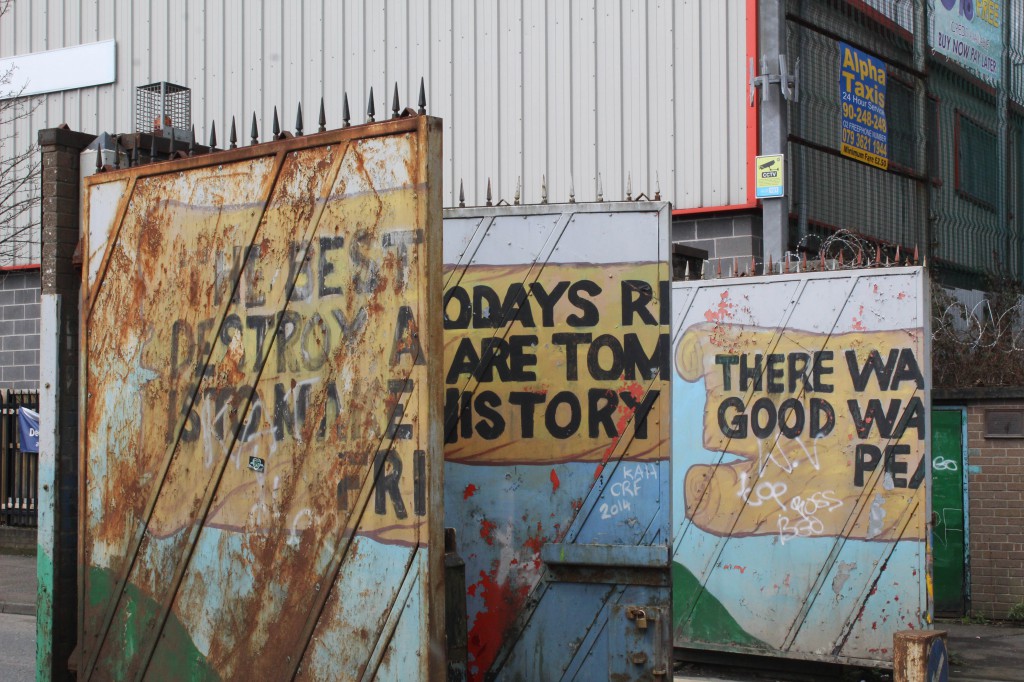 |
| The gates between the Unionist and Nationalist neighborhoods in Belfast, Northern Ireland. |
When I think of Belfast, I think of violence, Jamie Dornan, and the Titanic. While all of those things are a part of Belfast's past, there was so much more to this city than I had ever imagined.
We kicked off the day at St. George's Market, sampling food from several nationalities, like crepes, falafels, burgers and chowder. Everybody had to stop at an ATM and get some pounds since Northern Ireland is part of the United Kingdom, which I think a lot of people forget sometimes. Northern Ireland is comprised of only six counties, whereas the Republic of Ireland has twenty-six. Northern Ireland's history is a long, complicated, and somewhat tragic one, but I think that's part of what made the trip so meaningful.
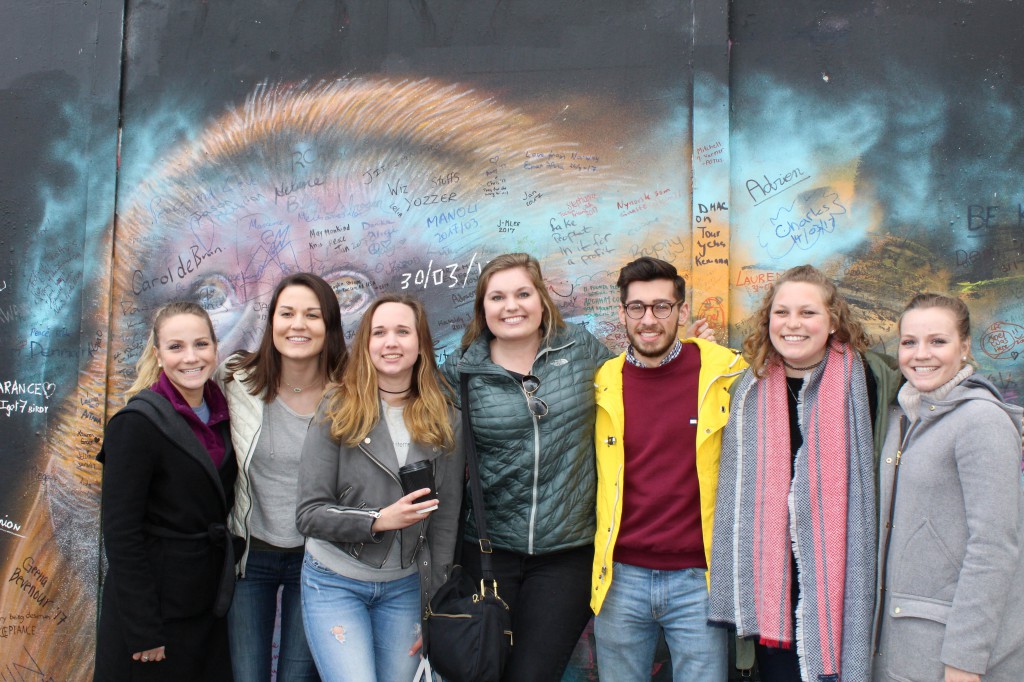 |
| Some classmates in front of the Peace Walls |
One of the professors here at CEA Dublin, Kelly, accompanied us to Belfast and gave us a bus and walking tour around the city to teach us some background about Belfast and to help us understand what is known as "The Troubles," or decades of violence, fighting, and tension that gave Belfast a bit of a bad reputation.
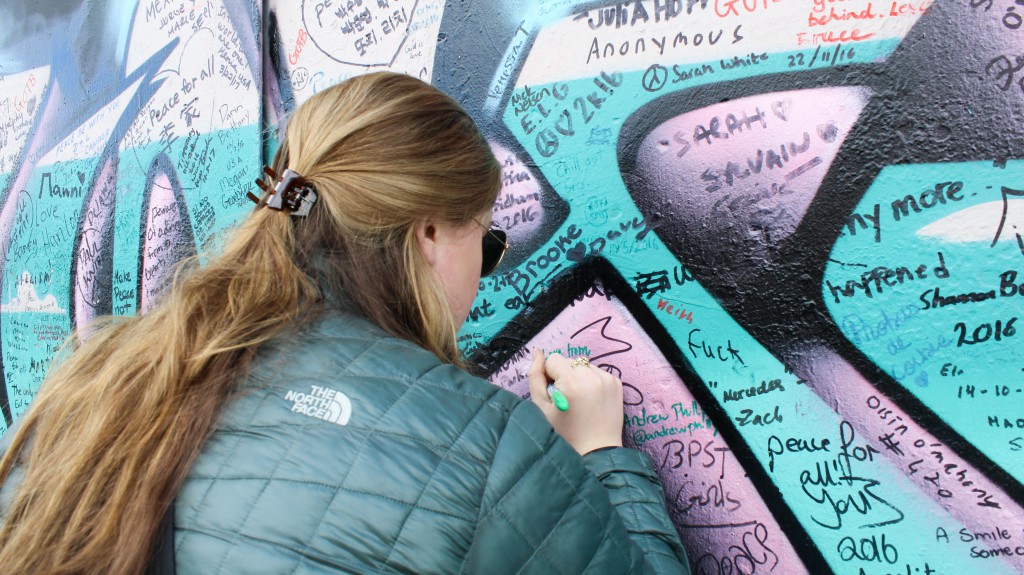 |
| Signing the Peace Walls between the Catholic and Protestant neighborhoods |
Kelly explained that most of the fighting is a mix of two major points of difference - Catholicism vs. Protestantism and Nationalism vs. Unionism. Generally, the Catholics and Nationalists were the same people and the Protestants and the Unionists were the same people. There were decades of bombings, shootings, and so many other terrible acts in Belfast as Northern Ireland attempted to figure out the fine details of its constitution and overall sovereign standing. To use a euphemism, to be part of the UK or not to be part of the UK was the question.
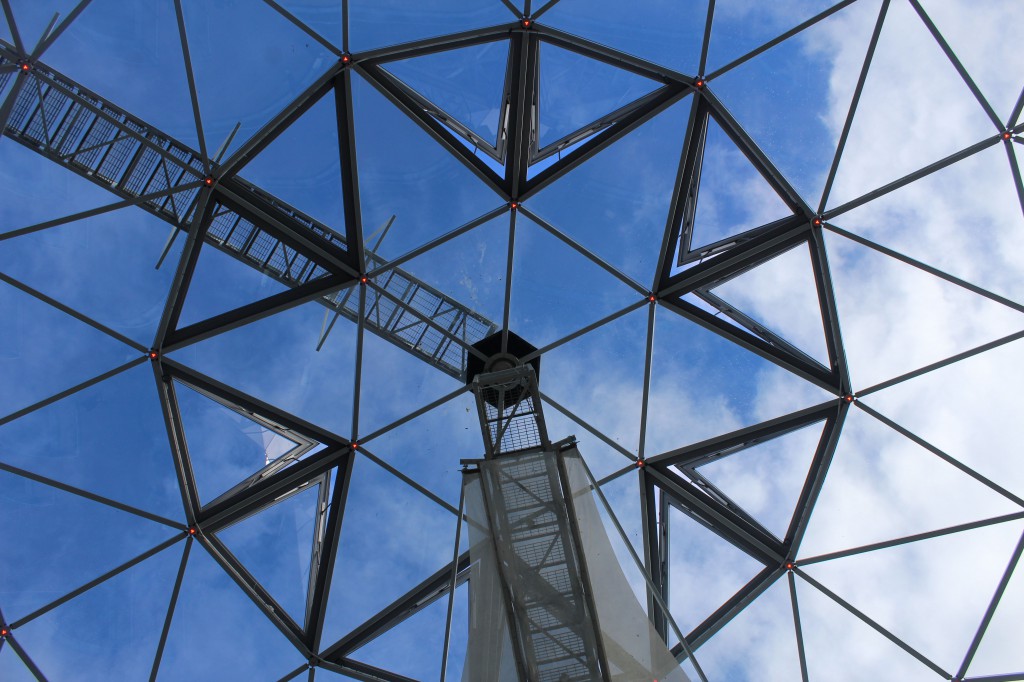 |
| A view of the top of the Victoria Shopping Centre in Belfast |
Although we only spent a day in Belfast, it was easy to see the profound impact that this status of tense unknown had had on the city over the years. The peace walls are still standing, the gates between the Catholic and Protestant neighborhoods still close at 7 PM every night, and there were more memorials than I could count. We did get to go sign the peace walls, and it was fascinating to see how many references to other world events were plastered on the walls, like the fall of the Soviet Union, ISIS/ISIL, 9/11, Orlando, and so much more. The signatures were scattered about the wall, which still runs for about 2 kilometers in between the Catholic and Protestant neighborhoods, and in a few years, the possibility of removing the wall is on the government agenda.
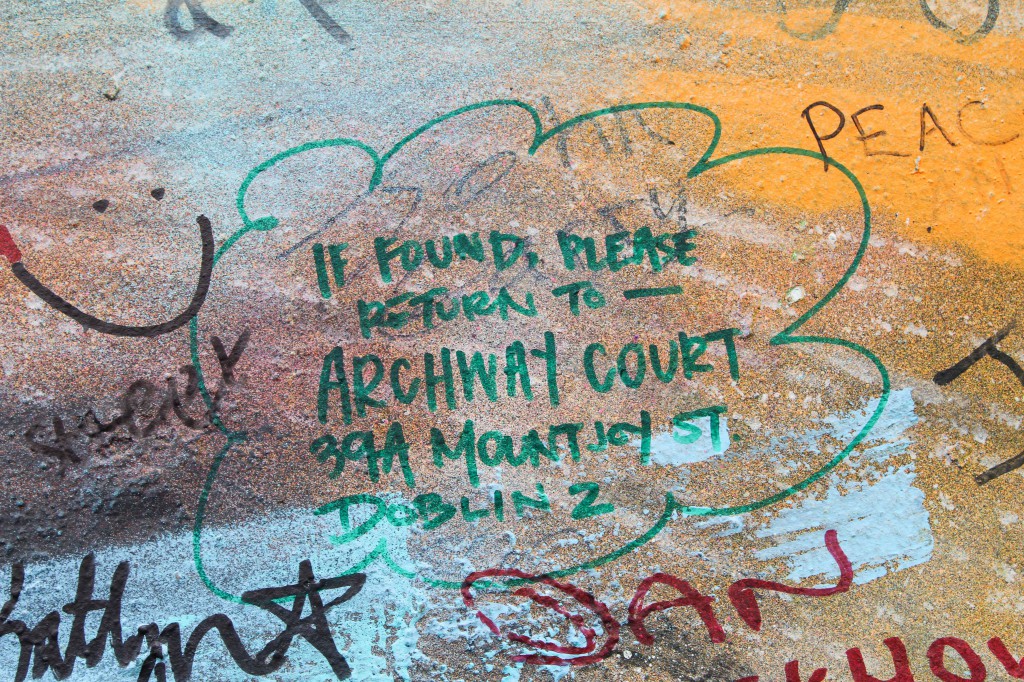 |
| My personal favorite signature on the Peace Walls. |
Since I still have a limited knowledge of Belfast's history, I cannot say whether or not I think that the wall in its existence or its potential removal was/would be a good idea, but I can say that this day trip enlightened my understanding of a country that previously I had assumed was just a formal separation of the Republic. It's good to be wrong sometimes.
Victoria N. is the Spring 2017 MOJO Blogger in Dublin, Ireland. She is currently a junior studying Commerce & Business at Rhodes College.










